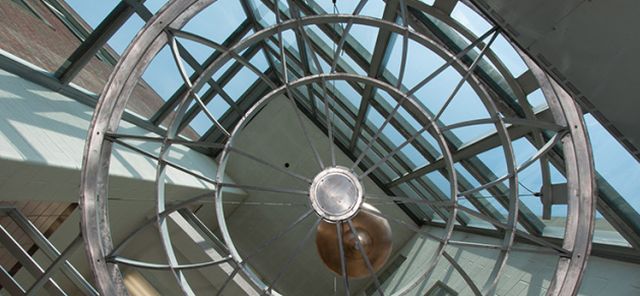
Physics Faculty Publications
Document Type
Article
Publication Date
9-1-2016
Publication Source
Energy and Buildings
Abstract
Energy efficiency and renewable energy (EERE) investment in multifamily residences in the United States has not kept pace with investment in resident-owned facilities. Split incentives, where owners cannot benefit economically from energy cost savings for residences and resident investment in EERE is not feasible, have posed a significant barrier. A clean energy utility is posited to circumvent this barrier. This utility would be responsible for power purchase from the grid, ideally as a real-time purchase agent from the grid manager; investment in energy efficiency and renewable energy; and demand management through control of water heating, as well as supply-side management through deployment of stored solar at near-peak grid power purchase cost. A clean energy fee is posed for recovery of costs, in contrast to typical consumption strategies (per kW h).
A case study approach is employed to evaluate the feasibility of this type of utility of reducing carbon production in this building sector. Considered in the analysis is a 2008 multifamily facility located in the Midwest of the U.S., with apartment level interval meters for both power and water. Historical data from these meters were used to assess the savings and demand-side management potential from investments in improved efficiency lighting, refrigeration, heat pumps, and water heaters, as well as investments in solar PV and storage for supply-side management. The results show that the packaged retrofit EERE investment could yield costs for residents and profits for energy manager comparable to those in the current residential pricing scheme, while reducing grid-sourced energy by 42%. When solar PV and battery storage are added to the solution, it is shown that a clean energy fee structure can cost-effectively drive savings to over 54%. For new construction, even deeper cost effective savings are realizable. This research demonstrates the potential to drive deep energy savings in the multifamily building sector that can lower costs to residents through the establishment of clean energy utilities which recover investments in energy efficiency, demand management, and solar PV/battery systems through resident clean energy fees rather than consumption fees.
Inclusive pages
806-817
ISBN/ISSN
0378-7788
Document Version
Postprint
Copyright
Copyright © 2016, Elsevier B.V.
Publisher
Elsevier
Volume
127
Issue
1
Peer Reviewed
yes
eCommons Citation
Raziei, Ata; Hallinan, Kevin P.; and Brecha, Robert J., "A Clean Energy Utility for Multifamily Housing in a Deregulated Energy Market" (2016). Physics Faculty Publications. 35.
https://ecommons.udayton.edu/phy_fac_pub/35



Comments
This manuscript version is made available in compliance with the publisher's policy on self-archiving. It is licensed under the CC-BY-NC-ND 4.0 license http://creativecommons.org/licenses/by-nc-nd/4.0/.
Permission documentation on file.